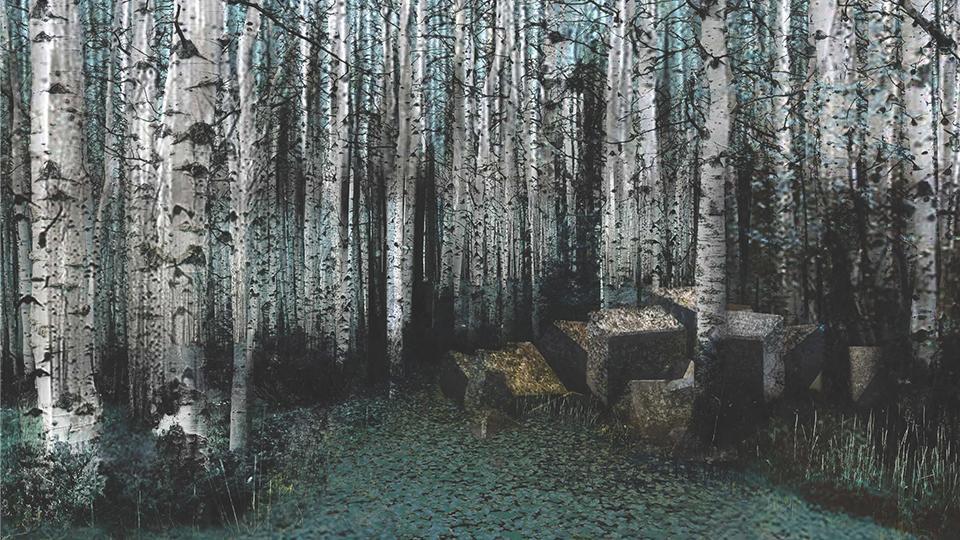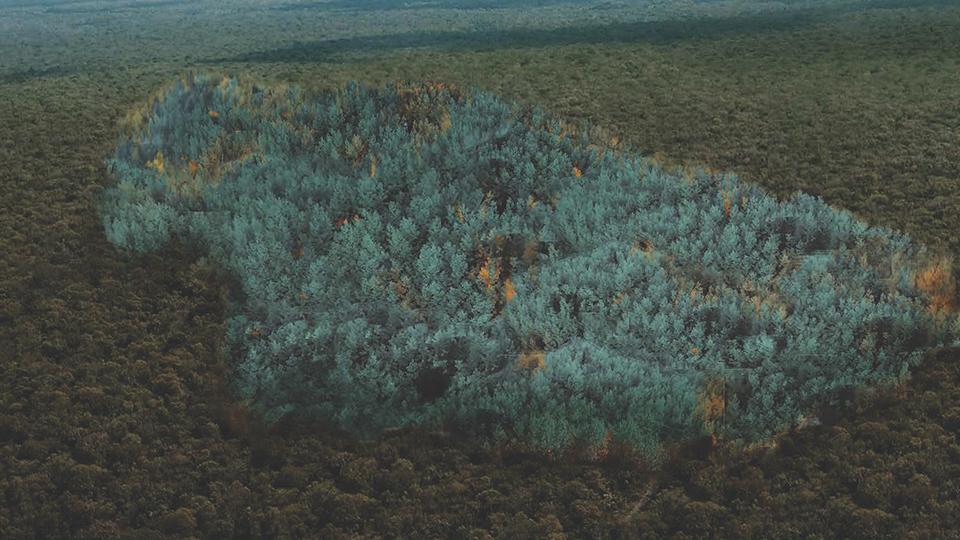A "blue zone" to talk to our descendants
In the spring of 2015, the National Agency for Radioactive Waste Management (Andra) launched a call for an artistic project. The goal? Imagine "the memory of radioactive waste disposal sites for future generations". Challenge taken by the duo of artists Stéfane Perraud and Aram Kebabjian, who are among the eight winners of the contest. Interview.

We are in Montreuil (France). The workshop is a charming bric-a-brac of books and objects of all kinds. A visual artist from the world of performance and multimedia, Stéfane has been working for about two years designing and writing projects with Aram, a photographer and writer with a Ph.D in philosophy. Stéfane and Aram approach the impossible matter by all means: reconfiguration of the table of unstable isotopes, luminous representations of radionuclides, a Cherenkov blue fluorescent aquarium ...
One holds the pen, the other the pencil. One starts a sentence, the other ends it. Between these two, the communication is easy and productive.
Can we introduce ourselves The Blue Zone?
Stéfane Perraud: The Blue Zone is a fiction novel written from the future, in 2415. The story is as follows: in 400 years, in the Meuse, scientists discover a forest whose blue color, unique in the world, remains first a mystery. After conducting the survey, the researchers discovered that this genetically modified forest was planted on a radioactive waste landfill, the last vestiges of the nuclear heritage dating back to the beginning of the 21st century. Indeed, in this utopian future, energy and nuclear waste have completely disappeared from the surface of the globe. This forest is our work, Aram and I, and has grown in the distant past.
Why did you choose a forest as an index of this nuclear memorial?
Aram Kebabjian: We have chosen a beautiful forest to take a sneak out of the catastrophic vision generally associated with nuclear power. This place should be avoided, we made it a tourist site. Our idea was that to keep the memory of a nuclear landfill, we must make it a zone that through the centuries we will come to visit and admire rather than forget it.

Why did you choose to give it a blue color?
SP: For several reasons. After the Chernobyl nuclear disaster in 1986, around the power station, the forest was completely burned by radiation. It had become red as in autumn. And then, going back in time, following the First World War, the "red zones" were those areas contaminated by chemical weapons that had to be avoided. It is with reference to these events that we opted, taking by opposition, the blue color.
AK: Yes, and blue also refers to the "Cherenkov blue", a fairly well-known phenomenon of nuclear reactors: higher than that of light, in water, the speed of propagation of nuclear waves produces a blueing effect. Stéfane has also sought to reproduce this reaction in several installations where lasers pass through tanks filled with photosensitive gel retaining the memory of light (see http://stefane-perraud.fr/portfolio/bleu-gorgone-01/ 2014).
From the beginning, Stéfane worked on the question of toxicity and came in 2010 to nuclear toxicity. Your duo is not his first project around this theme (eg the cycle of fiction "Isotopia") ... What interests you so much in the radioactive material?

SP: If radioactivity interests me so much, it's because from the beginning a mythology was built around nuclear power. Nuclear attracts and repels, protects and destroys. And alongside the mythology, from Becquerel to Einstein via the civilian nuclear and the H Bomb, nuclear is also behind the major dates of our recent history. The image of nuclear energy has changed a lot in the last decades: today, quite negative, this limitless energy was very exciting for the crowds in the 1950s. But I want to point out that there is no militant dimension in my job.
AK: Yes, what's interesting is that nuclear energy has this dimension of myth, ancient and modern at the same time. If, on the one hand, nuclear energy responds to the most archaic human fantasy of total power over nature and absolute energy, on the other hand it is matter that also returns us most to our limits. and to our finitude. This concomitance of greater power and greater limit, of power and destruction, makes our time a real myth.

